At the southern tip of Chile, the city of Punta Arenas is in a prime location for accessing Antarctica. This is one of the reasons IceBridge calls Punta Arenas home for several weeks during Antarctic field campaigns. But IceBridge isn’t the only scientific game in town. The U.S. Antarctic Program (USAP), British Antarctic Survey (BAS) and number of other organizations also rely on the Punta Arenas airport and the town’s ocean access.
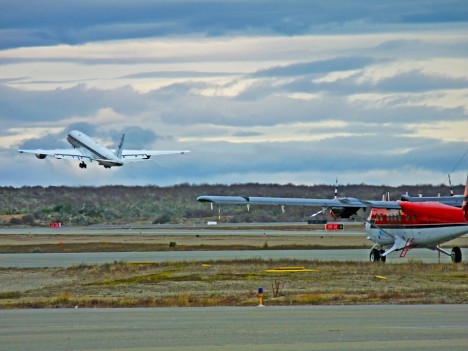
The NASA DC-8 taking off from the Punta Arenas airport. To the right is a Twin Otter aircraft used by the U.S. Antarctic Program. Credit: NASA / Kyle Krabill
The USAP brings two of its ice-capable research vessels, the Palmer and the Gould, to Punta Arenas. From there they carry out research cruises and transport people and cargo to and from Palmer Station, the National Science Foundation’s research base on the Antarctic Peninsula. In addition, USAP will sometimes base aircraft at the Punta Arenas airport on their way to and from Antarctica.
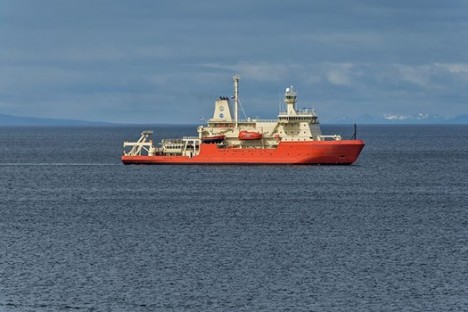
The R/V Nathaniel B. Palmer in the Straits of Magellan just off the coast in Punta Arenas, Chile. Credit: NASA / Michael Studinger
The United States isn’t the only nation with a strong presence in Patagonia. BAS research teams use Punta Arenas as a jumping off point for their research bases such as Rothera Station on the Antarctic Peninsula. In the photo below we can see a BAS Dash-7 and Twin Otter aircraft on the ramp at the Punta Arenas airport.
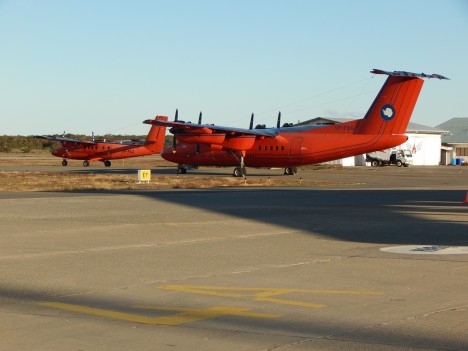
Twin Otter and Dash 7 aircraft operated by the British Antarctic Survey sit at the Punta Arenas airport. Credit: NASA / George Hale
In addition to the various Antarctic research programs working here, a number of companies that transport people, equipment and supplies to Antarctica fly in and out of Punta Arenas during the research season. Below are an IL-76 cargo jet operated by Almaty Air and a ski-equipped DC-3T aircraft flown by Antarctic Logistics Centre International.
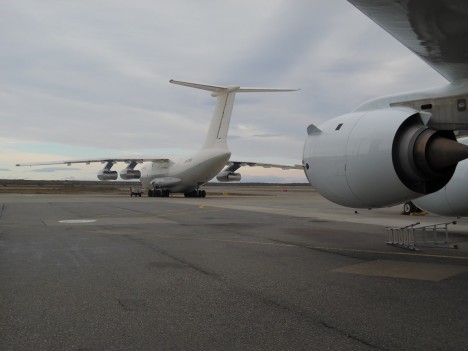
An Almaty Air IL-76 cargo jet at the Punta Arenas airport. To the right is one of the NASA DC-8’s engines. Credit: NASA / Jim Yungel
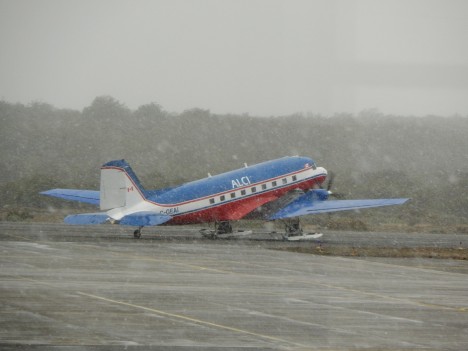
An Antarctic Logistics Centre International (ALCI) DC-3T aircraft taxiing on the ramp on a snowy day at the Punta Arenas airport. Credit: NASA / George Hale
Tags: Antarctic 2014




Please tell us why Punta Arenas is used for all these operations instead of Ushuaia, which is closer to Antarctica.
Antarctica wildlife must really be in danger due to the steady warming of our sea and drop in available ice. What can we do to decrease global warming?
Dear George,
I bet it is difficult to get in and out of the Antarctica airports when the weather is so icy. I really admire the important work that your doing and enjoy looking at the photographs that you posted on line.
Thank you again for participating in this important research operation. I wish we could see more photos of the ice shelves. One of my favorite site’s grant money ran out a couple of years ago, so there have been no new satellite photos of the Ross, Larsen, or Ronn ice-shelves. And we are going into summer now in the Antarctic. It would be nice to see what is new. Any news on Pine Mountain?
I hope your work is as thrilling as it seems. We “flat-landers” are grateful for you adventurers!
Be safe, keep warm.
lee marx